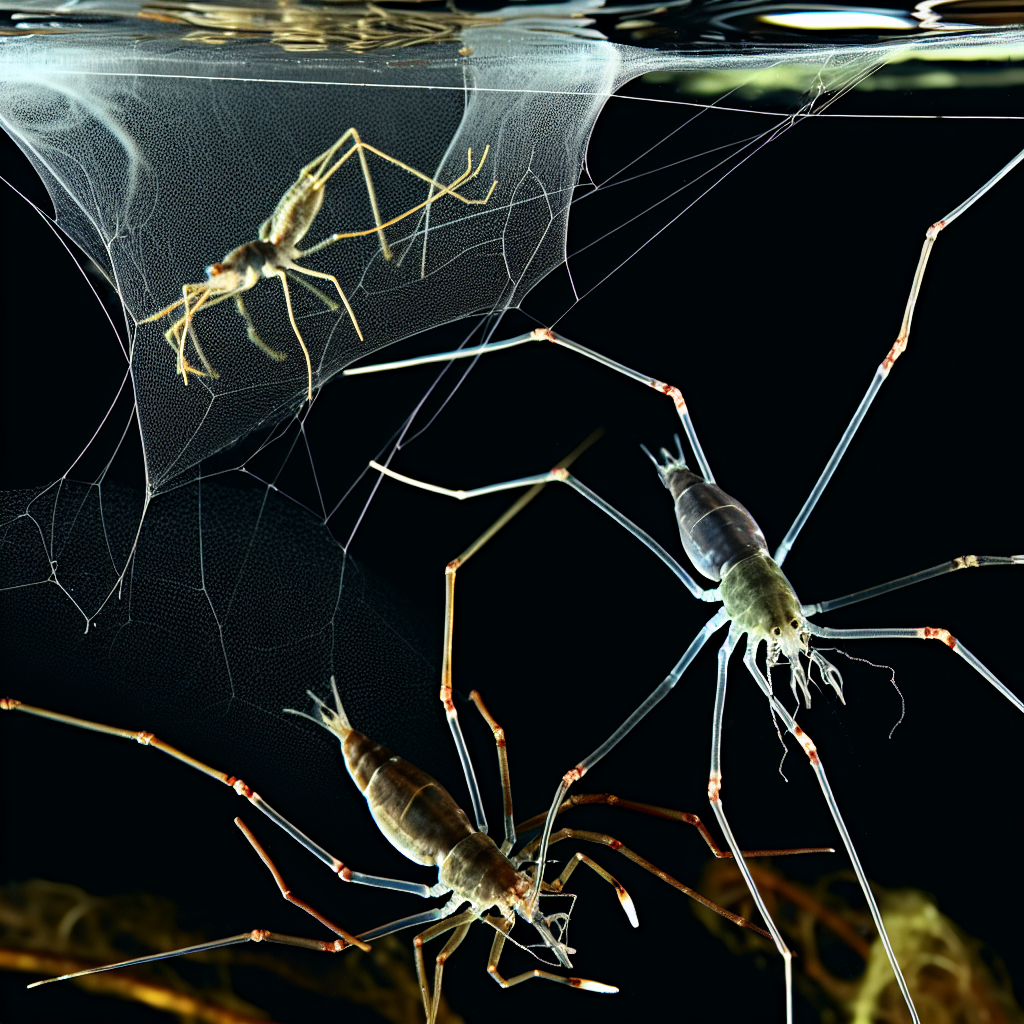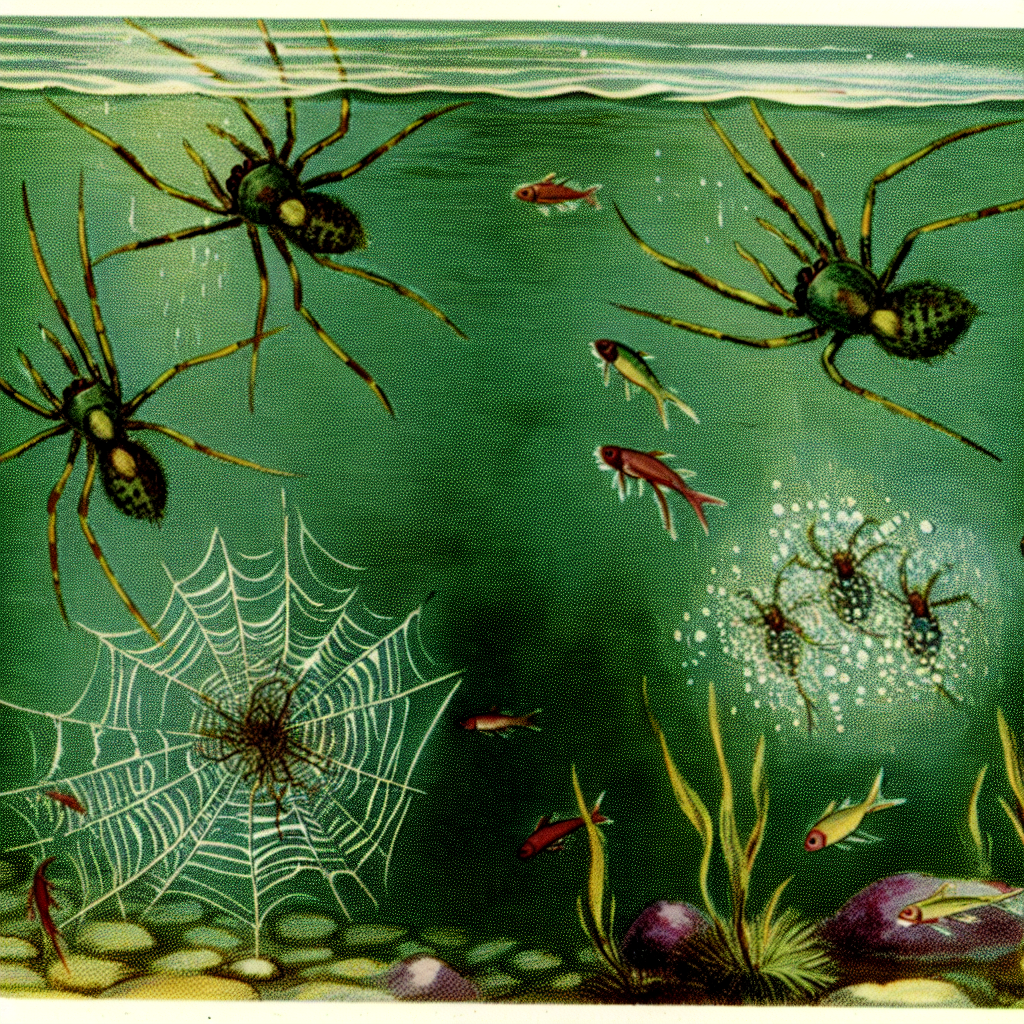Adaptations of Swimming and Spinning Aquatic Spiders
Swimming and spinning aquatic spiders have evolved a range of fascinating adaptations that enable them to survive and thrive in their watery habitats. These spiders, which belong to the family Pisauridae, have developed unique strategies for locomotion, hunting, and reproduction that allow them to navigate their aquatic environments with ease.
One of the most remarkable adaptations of swimming and spinning aquatic spiders is their ability to move effortlessly through water. Unlike their terrestrial counterparts, these spiders have elongated legs that are covered in fine hairs, which create a large surface area that allows them to effectively paddle through the water. This adaptation enables them to swim gracefully and swiftly, making them highly efficient predators in their aquatic habitats.
In addition to their specialized legs, swimming and spinning aquatic spiders also possess a unique respiratory system that allows them to extract oxygen from the water. Unlike most spiders, which rely on book lungs or tracheae to breathe, these spiders have developed a specialized structure called a plastron. The plastron is a thin layer of air that surrounds their bodies, acting as a respiratory bubble. This adaptation allows them to remain submerged for extended periods, as they can extract oxygen directly from the water through their cuticle.
Another fascinating adaptation of swimming and spinning aquatic spiders is their ability to spin webs underwater. While most spiders construct their webs in the air, these spiders have evolved the ability to create silk structures underwater. They do this by trapping air bubbles in their silk, which allows the web to maintain its shape and buoyancy. This adaptation enables them to capture prey and create a safe retreat in their aquatic environment.
Furthermore, swimming and spinning aquatic spiders have also developed unique hunting strategies to catch their prey. These spiders are known for their ability to detect vibrations on the water’s surface, which helps them locate potential prey. Once they have detected a suitable target, they use their specialized legs to swim towards it swiftly. Their elongated legs also allow them to navigate through dense vegetation and capture prey that may be hiding in the water.
Reproduction is another area where swimming and spinning aquatic spiders have adapted to their watery habitats. Unlike most spiders, which lay their eggs in silk sacs on land, these spiders have evolved to lay their eggs underwater. The female spider constructs a silk sac that contains her eggs and attaches it to a submerged object, such as a plant or rock. This adaptation protects the eggs from predators and provides a suitable environment for their development.
In conclusion, swimming and spinning aquatic spiders have developed a range of remarkable adaptations that enable them to survive and thrive in their watery habitats. From their specialized legs and respiratory system to their ability to spin webs underwater and detect vibrations on the water’s surface, these spiders have evolved unique strategies for locomotion, hunting, and reproduction. Their adaptations highlight the incredible diversity and ingenuity of nature, as these spiders have found innovative ways to navigate and thrive in their aquatic environments.
Survival Strategies of Aquatic Spiders in Water Environments

Swimming and spinning aquatic spiders have developed remarkable survival strategies to thrive in water environments. These spiders have adapted to their aquatic habitats by evolving unique physical characteristics and behaviors that allow them to navigate and capture prey effectively. By understanding these survival strategies, we can gain insight into the fascinating world of aquatic spiders and appreciate their remarkable abilities.
One of the most striking features of swimming and spinning aquatic spiders is their ability to move effortlessly through water. Unlike their terrestrial counterparts, these spiders have elongated legs covered in fine hairs that create a hydrophobic surface. This hydrophobicity allows them to repel water and move with ease, similar to how a water strider glides on the surface of a pond. By reducing the drag caused by water resistance, these spiders can swim swiftly and efficiently, enabling them to chase down prey or escape from predators.
In addition to their hydrophobic legs, aquatic spiders also possess specialized breathing structures that enable them to extract oxygen from the water. These spiders have developed book lungs, which are thin, leaf-like structures located on the underside of their abdomen. These book lungs allow the spiders to extract oxygen directly from the water, ensuring their survival in oxygen-deprived environments. This adaptation is crucial for their ability to remain submerged for extended periods while hunting or evading predators.
To capture prey, swimming and spinning aquatic spiders employ a variety of hunting techniques. Some species construct intricate underwater webs that serve as traps for unsuspecting prey. These webs are made from silk produced by the spiders and are strategically positioned in areas with high prey density. When an unsuspecting insect or small fish becomes entangled in the web, the spider quickly immobilizes its prey using venomous bites. This hunting strategy allows the spiders to efficiently capture prey without expending excessive energy.
Other aquatic spiders are more active hunters and rely on their exceptional swimming abilities to catch prey. These spiders use their hydrophobic legs to propel themselves through the water, chasing down small aquatic organisms such as mosquito larvae or tadpoles. Their agile movements and lightning-fast reflexes make them formidable predators in their aquatic habitats. By actively hunting, these spiders can secure a steady food source and increase their chances of survival in water environments.
Surviving in water environments also requires effective strategies for avoiding predators. Swimming and spinning aquatic spiders have developed various defensive mechanisms to protect themselves from potential threats. Some species have evolved the ability to camouflage themselves by blending in with their surroundings. These spiders can change their body coloration to match the aquatic vegetation or substrate, making them virtually invisible to predators. This camouflage allows them to remain undetected and increases their chances of survival.
In conclusion, swimming and spinning aquatic spiders have evolved remarkable survival strategies to thrive in water environments. Their hydrophobic legs, specialized breathing structures, and unique hunting techniques enable them to navigate and capture prey efficiently. Additionally, their defensive mechanisms, such as camouflage, help them avoid predators and increase their chances of survival. By studying these fascinating creatures, we can gain a deeper understanding of the incredible adaptations that allow them to thrive in water environments.
The Unique Behavior and Ecology of Swimming and Spinning Aquatic Spiders
Swimming and spinning aquatic spiders are fascinating creatures that have developed unique behavior and ecology to survive in their watery habitats. These spiders have evolved remarkable adaptations that allow them to navigate through water with ease and catch their prey effectively. In this article, we will explore the intriguing world of swimming and spinning aquatic spiders and delve into the slick survival strategies they employ.
Aquatic spiders are a diverse group of arachnids that have successfully colonized freshwater environments. Unlike their terrestrial counterparts, these spiders have adapted to life in water and have developed specialized traits to thrive in this challenging environment. One of the most remarkable adaptations is their ability to swim. Swimming spiders use their long legs to paddle through the water, propelling themselves forward with graceful movements. This unique behavior allows them to explore their surroundings and search for food.
To catch their prey, swimming spiders employ a variety of hunting techniques. Some species create a thin layer of silk on the water’s surface, which acts as a net to trap unsuspecting insects. These spiders patiently wait for their prey to land on the water, and when the opportunity arises, they swiftly dive in and retrieve their catch. This strategy requires precision and agility, as the spiders must time their movements perfectly to avoid alerting their prey.
Another fascinating behavior exhibited by aquatic spiders is their ability to spin underwater webs. These spiders construct intricate silk structures that serve as both a shelter and a hunting ground. The underwater webs are designed to capture small aquatic organisms, such as insects and small fish. The spiders strategically position themselves within their webs, waiting for their prey to become entangled. Once trapped, the spiders quickly immobilize their catch and inject venom to subdue it.
The silk produced by aquatic spiders is a crucial component of their survival. It not only allows them to construct their webs but also aids in their locomotion. The silk acts as a buoyancy aid, helping the spiders stay afloat and navigate through the water. Additionally, the silk provides a means of communication, allowing the spiders to detect vibrations and signals from their environment.
In addition to their unique behavior, swimming and spinning aquatic spiders have also developed specialized ecological adaptations. These spiders have evolved to tolerate low oxygen levels in water, enabling them to inhabit environments that would be inhospitable to other organisms. They have a remarkable ability to extract oxygen from the water using specialized structures called book lungs. These book lungs allow the spiders to breathe air while submerged, ensuring their survival in oxygen-deprived conditions.
Furthermore, swimming and spinning aquatic spiders have adapted to their prey’s behavior and ecology. They have evolved to exploit the abundance of insects and small aquatic organisms that inhabit freshwater environments. By utilizing their unique hunting techniques and silk structures, these spiders have become efficient predators, ensuring their survival in their watery habitats.
In conclusion, swimming and spinning aquatic spiders are remarkable creatures that have developed slick survival strategies to thrive in their watery environments. Their ability to swim, spin underwater webs, and tolerate low oxygen levels showcases their remarkable adaptations. These spiders have successfully colonized freshwater habitats and have become skilled hunters, utilizing their unique behavior and ecology to catch their prey. The world of swimming and spinning aquatic spiders is a fascinating one, highlighting the incredible diversity and adaptability of nature.


